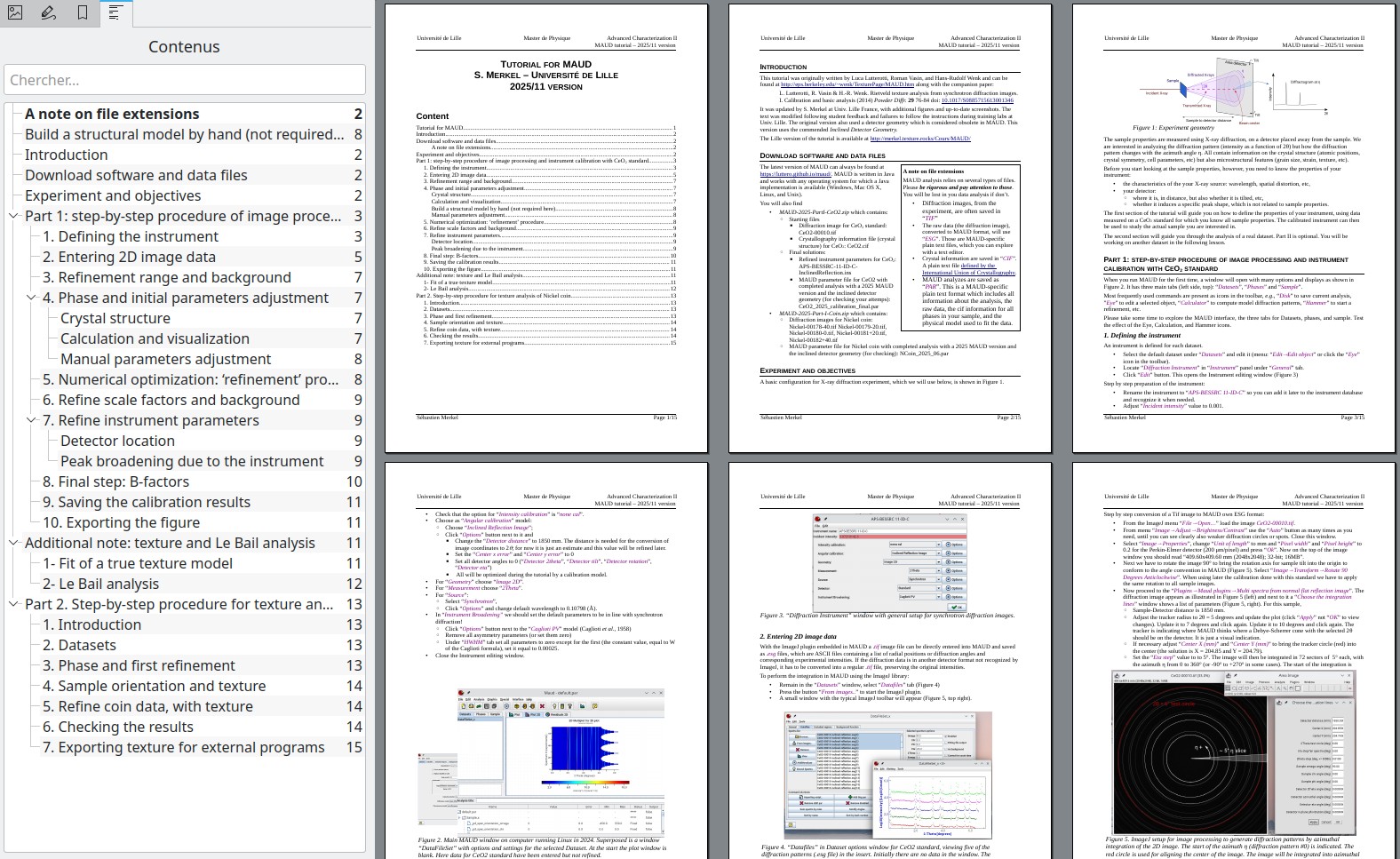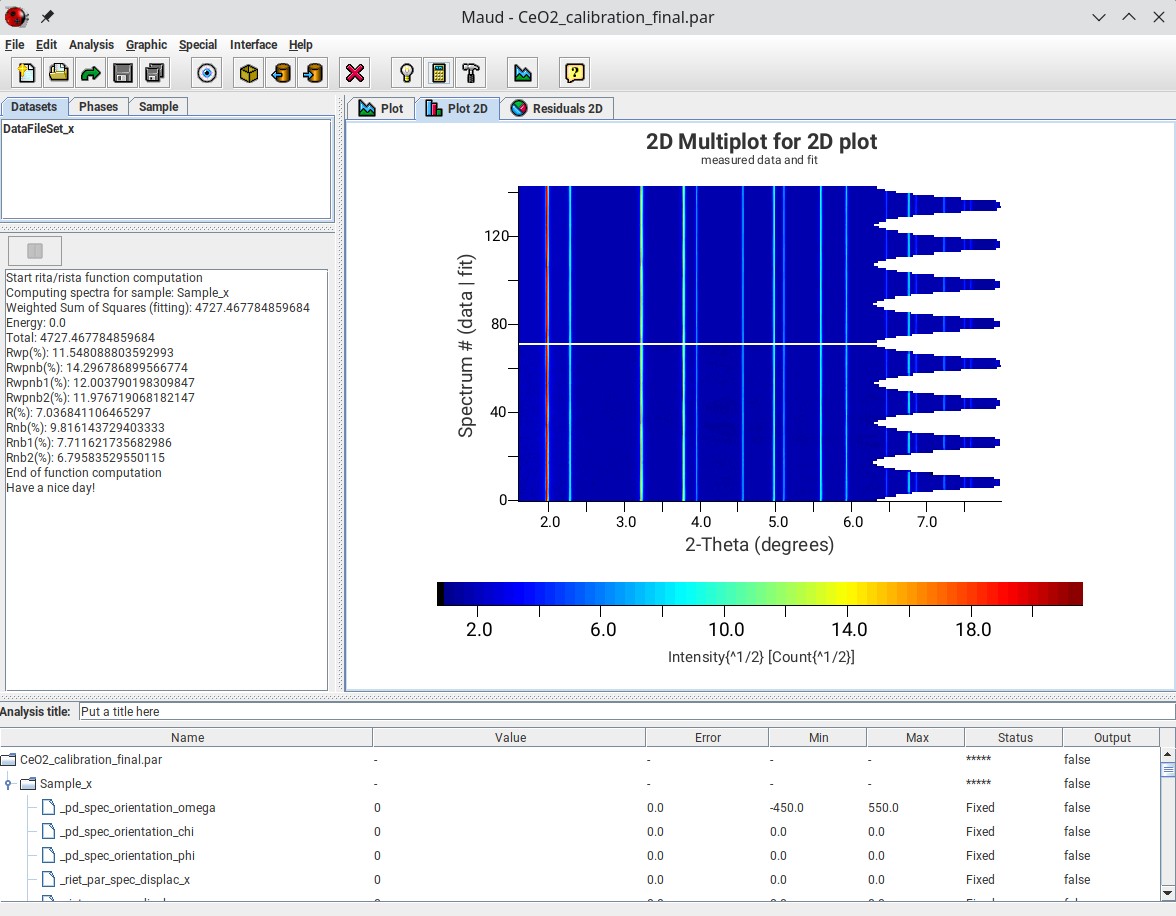2025 tutorial for MAUD

MAUD is a free software to analyse diffraction data using a combined Rietveld method. Its capabilities extend beyond diffraction and include fluorescence and reflectivity. It can analyse data from X-ray sources as well as neutrons, TOF, electrons from TEM. MAUD is particualry good a analysing microstructural parameters such as strain and texture, which can be cumbersome to fit in other packages. The program is developped by Luca Lutterotti at the University of Trento, Italy.
The latest version of MAUD can always be found at https://luttero.github.io/maud/. MAUD is written in Java and works with any operating system for which a Java implementation is available (Windows, Mac OS X, Linux, and Unix).
I have been using MAUD for over 20 years now. I wrote a first online tutorial around 2006/2007, which is still available at http://merkel.texture.rocks/RDX/index.php?n=Maud.RadialDiffraction. This tutorial is old. It was then superseeded by another tutorial, that came along with training datasets from the Berkeley team at https://seismo.berkeley.edu/~wenk/TexturePage/MAUD.htm. The Berkeley tutorial is from 2013 and is getting old as well, hence this page with an yet again updated tutorial.
This page hence presents an updated version of a MAUD tutorial in 2025, with additional figures and up-to-date screenshots. The text was modified following student feedback and failures to follow the instructions during several years of training labs at Univ. Lille. The original version also used a detector geometry which is considered obsolete in MAUD. This version uses the now recommended Inclined Detector Geometry, which required updates with to various locations of the manual.
If you follow Part I of this tutorial to the end, you should be able to start working on your own data. Part II in the original Berkeley tutorial was a dataset on (Mg,Fe)O. I use a different dataset on titanium in my Lille classes, which I will put here at some point.
Part I: calibration with CeO2 and the Berkeley nickel coin
- Main instruction file: 2025 tutorial for MAUD
- Zip file with the CeO2 calibration data: MAUD-2025-PartI-CeO2.zip, which includes
- Starting files
- Diffraction image for CeO2 standard: CeO2-00010.tif
- Crystallography information file (crystal structure) for CeO2: CeO2.cif
- Final solutions:
- Refined instrument parameters for CeO2: APS-BESSRC-11-ID-C-InclinedReflection.ins
- MAUD parameter file for CeO2 with completed analysis with a 2025 MAUD version and the inclined detector geometry (to compare with your own attemps): CeO2_2025_calibration_final.par
- Starting files
- Zip file for the Berkeley Nickel coin analysis: PartI-2025-NickelCoinData.zip, which includes:
- Diffraction images for Nickel coin: Nickel-00178-40.tif Nickel-00179-20.tif, Nickel-00180-0.tif, Nickel-00181+20.tif, Nickel-00182+40.tif
- MAUD parameter file for the Nickel coin with a completed analysis with a 2025 MAUD version and the inclined detector geometry (for comparison with your own attemps): NCoin_2025_06.par
The original diffraction data was collected by the UC Berkeley team and is described in L. Lutterotti, R. Vasin & H.-R. Wenk. Rietveld texture analysis from synchrotron diffraction images. I. Calibration and basic analysis (2014) Powder Diffr. 29 76-84 doi: 10.1017/S0885715613001346
Enjoy!


